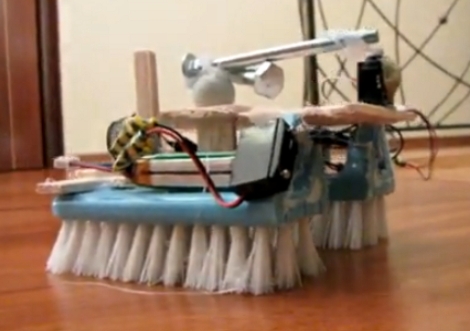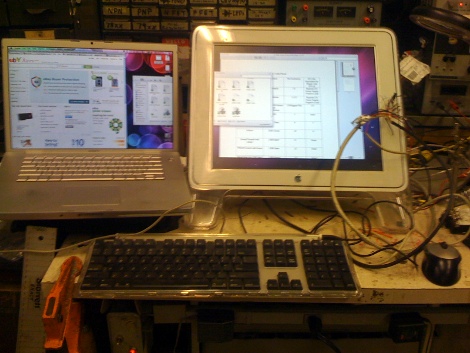This large bristlebot has no prolem steering itself by shifting its weight. It’s easy enough to watch the video after the break and see how this works. But there’s still the same air of “I can’t believe that actually works” which we experienced with the original bristlebot.
This is not the first attempt to calm a bristlebots movements, but we don’t remember seeing one you could drive around like an RC car. [Glajten] up-sized the bot with what appears to be a small shop broom cut in half, creating a catamaran design. The vibrating motor, which might have come out of a gaming controller, rides on the back of the bot, centered between the two bristle platforms. On the front a servo motor holds the shaft of a long bolt which has extra weight at the end of it. Steering happens when the weight is offset by a turn of the servo.
















